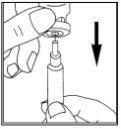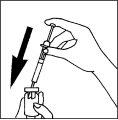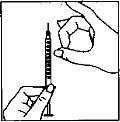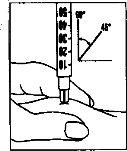
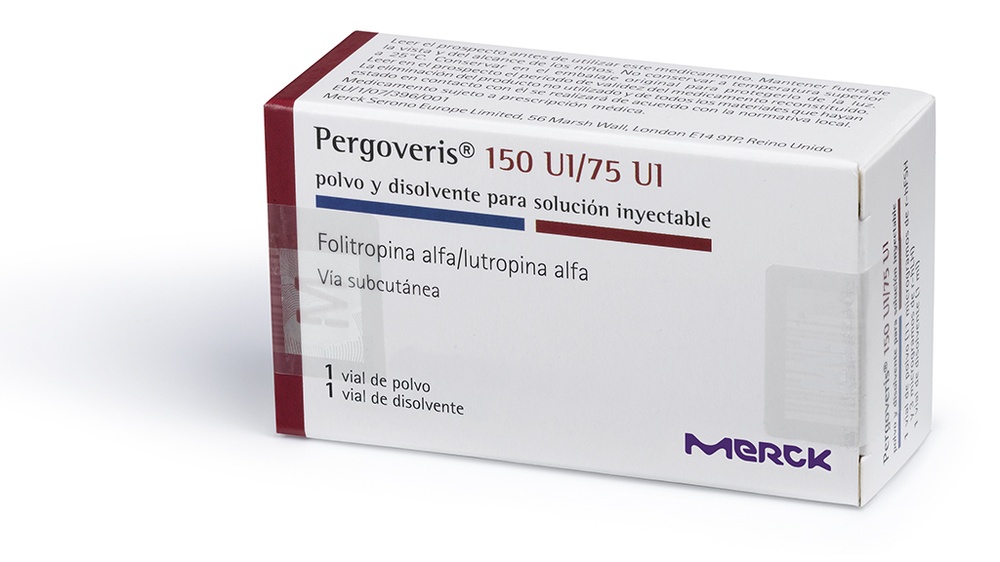
PERGOVERIS 150 IU/75 IU POWDER AND SOLVENT FOR INJECTABLE SOLUTION


How to use PERGOVERIS 150 IU/75 IU POWDER AND SOLVENT FOR INJECTABLE SOLUTION
Introduction
Package Leaflet: Information for the User
Pergoveris 150 IU/75 IU powder and solvent for solution for injection
folitropin alfa/lutropin alfa
Read all of this leaflet carefully before you start using this medicine because it contains important information for you.
- Keep this leaflet, you may need to read it again.
- If you have any further questions, ask your doctor, pharmacist, or nurse.
- This medicine has been prescribed for you only. Do not pass it on to others. It may harm them, even if their signs of illness are the same as yours.
- If you get any side effects, talk to your doctor, pharmacist, or nurse. This includes any possible side effects not listed in this leaflet. See section 4.
Contents of the pack
- What Pergoveris is and what it is used for
- What you need to know before you use Pergoveris
- How to use Pergoveris
- Possible side effects
- Storage of Pergoveris
- Contents of the pack and other information
1. What Pergoveris is and what it is used for
What Pergoveris is
Pergoveris contains two different active substances called "folitropin alfa" and "lutropin alfa". Both belong to the family of hormones known as "gonadotropins", which are involved in reproduction and fertility.
What Pergoveris is used for
This medicine is used to stimulate the development of follicles (each containing an egg) in the ovaries to help you get pregnant. It is intended for use in adult women (18 years of age or older) with low levels (severe deficiency) of "follicle-stimulating hormone" (FSH) and "luteinizing hormone" (LH). Normally, these women are infertile.
How Pergoveris works
The active substances in Pergoveris are copies of the natural hormones FSH and LH. In the body:
- FSH stimulates the production of eggs
- LH stimulates the release of eggs.
By replacing the missing hormones, Pergoveris allows women with low levels of FSH and LH to develop a follicle, from which an egg will be released after an injection of the hormone "human chorionic gonadotropin (hCG)". This helps women get pregnant.
2. What you need to know before you use Pergoveris
Before starting treatment, your fertility and that of your partner should be assessed by a doctor experienced in the treatment of fertility disorders.
Do not use Pergoveris:
- if you are allergic to follicle-stimulating hormone (FSH), luteinizing hormone (LH), or any of the other ingredients of this medicine (listed in section 6).
- if you have a brain tumor (in the hypothalamus or pituitary gland).
- if you have large ovaries or fluid-filled sacs in the ovaries (ovarian cysts) of unknown origin.
- if you have unexplained vaginal bleeding.
- if you have ovarian, uterine, or breast cancer.
- if you have a condition that would prevent a normal pregnancy, such as premature menopause, malformations of the sex organs, or benign tumors in the uterus.
Do not use this medicine if any of the above conditions apply to you. If you are not sure, consult your doctor, pharmacist, or nurse before starting to use this medicine.
Warnings and precautions
Consult your doctor, pharmacist, or nurse before starting to use Pergoveris.
Porphyria
Consult your doctor before starting treatment if you or any member of your family has porphyria (an inability to break down porphyrins that can be passed from parents to children).
Inform your doctor immediately if:
- your skin becomes fragile and blisters easily, especially in areas frequently exposed to the sun.
- you have stomach pain, arm, or leg pain.
In these cases, your doctor may recommend that you interrupt treatment.
Ovarian Hyperstimulation Syndrome (OHSS)
This medicine stimulates your ovaries, which increases the risk of experiencing ovarian hyperstimulation syndrome (OHSS). This occurs when your follicles develop too much and become large cysts. If you have pelvic pain, rapid weight gain, nausea, vomiting, or difficulty breathing, consult your doctor immediately, who may order you to interrupt treatment (see section 4, in "More serious side effects").
In case you do not ovulate and if the recommended dose and dosage regimen are respected, severe OHSS is less likely to occur. Treatment with Pergoveris rarely causes severe OHSS. This is more likely if the medicine used for final follicular maturation (containing human chorionic gonadotropin, hCG) is administered (see details in section 3, in "How much to use"). In case of developing OHSS, your doctor may not prescribe hCG in this treatment cycle and advise you to abstain from intercourse or use a barrier contraceptive method for at least 4 days.
Your doctor will ensure careful monitoring of ovarian response, through ultrasound and blood tests (estradiol determinations), before and during treatment.
Multiple Pregnancy
If you use Pergoveris, you have a higher risk of becoming pregnant with more than one child at a time ("multiple pregnancy", usually twins) than if you become pregnant through natural conception. Multiple pregnancy can cause medical complications for you and your babies. You can reduce the risk of multiple pregnancy by using the correct dose of Pergoveris at the correct times.
To minimize the risk of multiple pregnancy, it is recommended to perform ultrasound and blood tests.
Abortion
If you undergo ovarian stimulation to produce eggs, the likelihood of having a miscarriage is higher than in the average woman.
Ectopic Pregnancy
Women who have ever suffered from blockage or damage to the fallopian tubes (tubal disease) are at risk of pregnancy with implantation of the embryo outside the uterus (ectopic pregnancy). This is the case whether the pregnancy is spontaneous or achieved through fertility treatments.
Blood Coagulation Problems (Thromboembolic Episodes)
Consult your doctor before starting to use Pergoveris if you or any member of your family has ever suffered from blood clots in the leg or lung, myocardial infarction, or stroke. You may have a higher risk of suffering from severe blood clots or worsening of existing clots with Pergoveris treatment.
Tumors of the Sex Organs
Tumors in the ovaries and other sex organs, both benign and malignant, have been reported in women who have undergone multiple treatment cycles for infertility.
Allergic Reactions
Isolated cases of non-serious allergic reactions to Pergoveris have been reported. If you have ever had this type of reaction with a similar medicine, consult your doctor before starting to use Pergoveris.
Children and Adolescents
Pergoveris should not be used in children and adolescents under 18 years of age.
Other Medicines and Pergoveris
Tell your doctor or pharmacist if you are using, have recently used, or might use any other medicines.
Do not use Pergoveris with other medicines in the same injection, except with folitropin alfa, if prescribed by your doctor.
Pregnancy and Breast-feeding
Do not use Pergoveris if you are pregnant or breast-feeding.
Driving and Using Machines
Pergoveris is not expected to affect your ability to drive or use machines.
Pergoveris contains Sodium
Pergoveris contains less than 1 mmol of sodium (23 mg) per dose; this is essentially "sodium-free".
3. How to use Pergoveris
Follow the instructions for administration of this medicine exactly as indicated by your doctor or pharmacist. If you are in doubt, consult your doctor or pharmacist again.
Use of this medicine
- Pergoveris is designed to be injected just under the skin (subcutaneously). To minimize skin irritation, choose a different injection site each day.
- It comes in the form of powder and liquid, which must be mixed and used immediately.
- Your doctor or nurse will teach you how to prepare and inject this medicine. They will supervise your first injection.
- If they agree that you can administer Pergoveris safely, you can then prepare and inject the medicine yourself at home. When you do, read and follow the instructions described below in the section "How to prepare and use the powder and solvent of Pergoveris" carefully.
How much to use
The usual initial dose is 1 vial of Pergoveris per day.
- Depending on the response, your doctor may decide to add a daily dose of a licensed folitropin alfa preparation to the Pergoveris injection. In this case, the dose of folitropin alfa is usually increased every 7 or 14 days by 37.5-75 IU.
- Treatment continues until the desired response is obtained. This occurs when you have developed a suitable follicle, assessed by ultrasound and blood tests.
- Up to five weeks may be necessary.
When the desired response is obtained, you will be given a single injection of human chorionic gonadotropin (hCG) 24 to 48 hours after your last Pergoveris injection. The best time for intercourse is on the day of the hCG injection and the day after. Alternatively, intrauterine insemination or another medically assisted reproduction procedure may be performed, at the discretion of your doctor.
If you get an excessive response, your treatment will be interrupted and you will not be given hCG (see section 2, in "Ovarian Hyperstimulation Syndrome (OHSS)"). In this case, your doctor will prescribe a lower dose of folitropin alfa in the next cycle.
How to prepare and use the powder and solvent of Pergoveris
Before starting preparation, read these instructions completely:
Give yourself the injection at the same time each day.
- Wash your hands and find a clean place
- It is important that your hands and the materials you use are as clean as possible
- A suitable place is a clean table or kitchen surface
- Gather and lay out everything you will need
- 1 vial containing the powder of Pergoveris
- 1 vial containing water for injections (solvent)
The following are not provided with the pack:
- 2 alcohol swabs
- 1 empty syringe for injection
- 1 needle for preparation
- 1 fine needle for injection under the skin
- a container for sharp objects to dispose of glass vials and needles with caution
- Preparation of the solution
|
|
|
|
- Preparation of the syringe for injection
|
|
- Injection of the dose
|
|
- After the injection
Dispose of all materials: once the injection is complete, immediately discard all needles and empty vials in the container for sharp objects. Any unused portion of the solution must be discarded.
If you use more Pergoveris than you should
The effects of an overdose of Pergoveris are unknown; however, it can be expected that OHSS may occur. However, this will only happen if hCG is administered (see section 2, in "Ovarian Hyperstimulation Syndrome (OHSS)").
If you forget to use Pergoveris
Do not use a double dose to make up for forgotten doses. Contact your doctor.
If you have any other questions about the use of this medicine, ask your doctor, pharmacist, or nurse.
4. Possible side effects
Like all medicines, this medicine can cause side effects, although not everybody gets them.
More serious side effects
Consult your doctor immediately if you notice any of the following side effects. Your doctor may tell you to stop using Pergoveris.
Allergic Reactions
Allergic reactions, such as skin rash, skin redness, blisters, swelling of the face with difficulty breathing, can sometimes be serious. This side effect is very rare.
Ovarian Hyperstimulation Syndrome (OHSS)
- Pelvic pain, accompanied by nausea or vomiting. These may be symptoms of ovarian hyperstimulation syndrome (OHSS). It is possible that your ovaries have overreacted to treatment and developed large cysts or fluid-filled sacs (see section 2, in "Ovarian Hyperstimulation Syndrome (OHSS)"). This side effect is frequent. If this happens to you, your doctor will need to examine you as soon as possible.
- OHSS can worsen with clearly enlarged ovaries, decreased urine production, weight gain, difficulty breathing, and/or possible fluid accumulation in the abdomen or chest. This side effect is uncommon (may affect up to 1 in 100 people).
- Complications of OHSS such as ovarian torsion or blood clotting occur rarely (may affect up to 1 in 1,000 people).
- Severe blood clotting problems (thromboembolic episodes), usually with severe OHSS, occur very rarely. This could cause chest pain, shortness of breath, stroke, or myocardial infarction. In rare cases, this can also occur independently of OHSS (see section 2, in "Blood Coagulation Problems (Thromboembolic Episodes)").
Other side effects
Very common (may affect more than 1 in 10 people)
- fluid-filled sacs in the ovaries (ovarian cysts)
- headache
- local reactions at the injection site such as pain, itching, bruising, swelling, or irritation.
Common (may affect up to 1 in 10 people)
- diarrhea
- chest pain
- nausea or vomiting
- abdominal or pelvic pain
- cramps or abdominal distension
Very rare (may affect up to 1 in 10,000 people)
- asthma may worsen.
Reporting of side effects
If you experience any side effects, talk to your doctor, pharmacist, or nurse, even if it is possible side effects not listed in this leaflet. You can also report side effects directly through the national reporting system listed in Appendix V. By reporting side effects, you can help provide more information on the safety of this medicine.
5. Storage of Pergoveris
Keep this medicine out of the sight and reach of children.
Do not use this medicine after the expiry date which is stated on the vials and on the carton after EXP. The expiry date is the last day of the month indicated.
Do not store above 25 ºC. Store in the original packaging to protect from light.
The medicine should be administered immediately after reconstitution.
Do not use Pergoveris if you notice visible signs of deterioration.
The reconstituted solution should not be administered if it contains particles or is not clear.
Medicines should not be disposed of via wastewater or household waste. Ask your pharmacist how to dispose of the packaging and medicines that are no longer needed. This will help protect the environment.
6. Package Contents and Additional Information
Composition of Pergoveris
The active substances are folitropin alfa and lutropin alfa.
- One vial contains 150 IU of folitropin alfa (equivalent to 11 micrograms) and 75 IU of lutropin alfa (equivalent to 3 micrograms).
- After reconstitution, each ml of the solution contains 150 IU of folitropin alfa and 75 IU of lutropin alfa per milliliter.
The other ingredients are:
- Sucrose, disodium hydrogen phosphate dihydrate, sodium dihydrogen phosphate monohydrate, methionine, and polysorbate 20, as well as concentrated phosphoric acid and sodium hydroxide for pH adjustment.
Appearance of the Product and Package Contents
- Pergoveris is presented as a powder and solvent for solution for injection.
- The powder is a lyophilized tablet of white to off-white color in a glass vial with a bromobutyl rubber stopper containing 150 IU (equivalent to 11 micrograms) of folitropin alfa and 75 IU (equivalent to 3 micrograms) of lutropin alfa.
- The solvent is a clear and colorless liquid in a glass vial containing 1 ml of water for injections.
- Pergoveris is presented in packs containing 1, 3, and 10 vials of powder along with the same number of vials of solvent (1, 3, and 10 vials). Not all pack sizes may be marketed.
Marketing Authorization Holder
Merck Europe B.V., Gustav Mahlerplein 102, 1082 MA Amsterdam, Netherlands
Manufacturer
Merck Serono S.p.A, Via delle Magnolie 15 (Industrial Zone), 70026 Modugno (Bari), Italy
Date of Last Revision of this Leaflet: {MM/YYYY}.
Other Sources of Information
Detailed information on this medicine is available on the European Medicines Agency website: http://www.ema.europa.eu.
- Country of registration
- Active substance
- Prescription requiredYes
- Manufacturer
- This information is for reference only and does not constitute medical advice. Always consult a licensed doctor before taking any medication. Oladoctor is not responsible for medical decisions based on this content.
- Alternatives to PERGOVERIS 150 IU/75 IU POWDER AND SOLVENT FOR INJECTABLE SOLUTIONDosage form: INJECTABLE, 300 IU/150 IUActive substance: combinationsManufacturer: Merck Europe B.V.Prescription requiredDosage form: INJECTABLE, 450 IU/225 IUActive substance: combinationsManufacturer: Merck Europe B.V.Prescription requiredDosage form: INJECTABLE, 900 IU/450 IUActive substance: combinationsManufacturer: Merck Europe B.V.Prescription required
Alternatives to PERGOVERIS 150 IU/75 IU POWDER AND SOLVENT FOR INJECTABLE SOLUTION in other countries
The best alternatives with the same active ingredient and therapeutic effect.
Alternative to PERGOVERIS 150 IU/75 IU POWDER AND SOLVENT FOR INJECTABLE SOLUTION in Ukraine
Online doctors for PERGOVERIS 150 IU/75 IU POWDER AND SOLVENT FOR INJECTABLE SOLUTION
Discuss dosage, side effects, interactions, contraindications, and prescription renewal for PERGOVERIS 150 IU/75 IU POWDER AND SOLVENT FOR INJECTABLE SOLUTION – subject to medical assessment and local rules.



